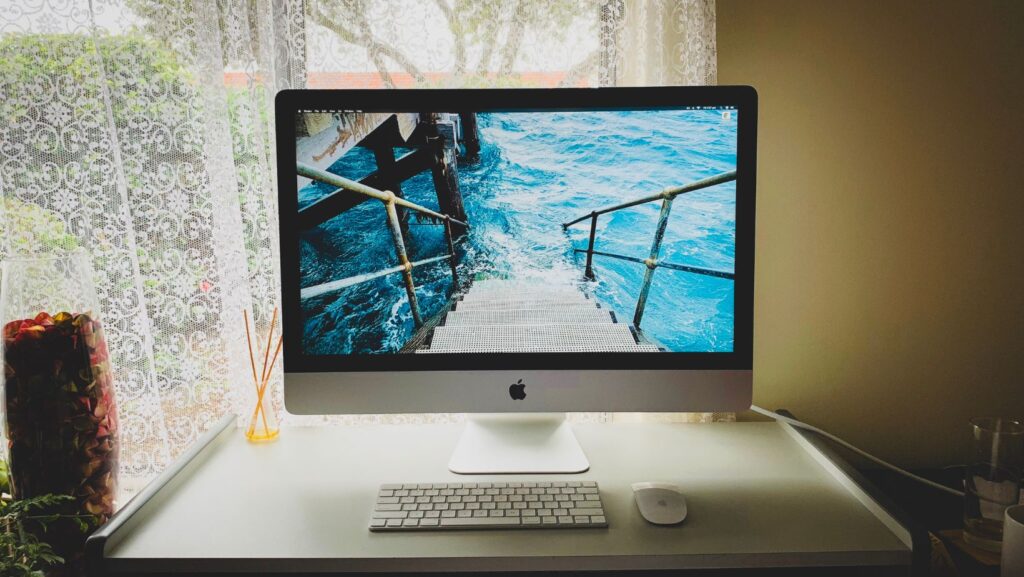
Connecting your Mac to a TV opens up a world of enhanced productivity, entertainment, and multimedia capabilities. Whether you’re streaming movies, mirroring presentations, or playing games on a larger screen, maximizing your Mac-to-TV experience can elevate your workflow and leisure time. However, achieving the best results often involves more than just a basic connection. Fine-tuning your settings and choosing the right apps for streaming and mirroring is crucial to seamless integration.
In this guide, we’ll explore essential strategies and tools for optimizing your Mac-to-TV setup. From selecting the most effective apps for streaming and mirroring to customizing settings for impeccable picture and sound quality, this article aims to help you transform your viewing experience. Whether you’re an IT professional or a casual user, our practical tips will ensure a smooth and enjoyable connection, making your Mac-to-TV usage as efficient and engaging as possible.
Ultimate Apps for Streaming and Mirroring from Mac to TV
Streaming and mirroring content from your Mac to your TV can significantly enhance your viewing experience, allowing for seamless transitions between work, presentations, and entertainment. Here are some of the top applications that make this process efficient and effective:
AirPlay for Apple Devices
AirPlay remains a highly popular choice for Mac users to stream media to Apple TVs or AirPlay-enabled TVs. This built-in feature allows you to mirror your Mac screen, making it ideal for presentations, video streaming, and more. Simply ensure your devices are connected to the same Wi-Fi network for effortless mirroring.
JustStream
JustStream is a versatile tool that supports mirroring and streaming from your Mac to almost any Smart TV, Chromecast, or Apple TV. With compatibility across a range of file formats, it makes sharing your screen hassle-free. The tool also includes the option to subtitle videos, enhancing your viewing experience for international media.
VLC Media Player
Renowned for its ability to play nearly every media file type, VLC Media Player also offers basic screen streaming and mirroring capabilities. While not as advanced as other tools, it serves as a great fallback for media playback and offers essential streaming options.
Subsection: Connecting with HDMI – A Practical Solution
For users who prefer a wired approach, knowing how to mirror MacBook to TV with HDMI can be invaluable. This method provides a stable connection and reduces latency, ensuring optimal video quality. By connecting your MacBook with an HDMI cable, you can mirror the screen directly to your TV without relying on Wi-Fi. For a step-by-step guide on setting this up and enhancing your viewing experience, resources like Setapp offer practical insights to make the process seamless. This approach is especially useful for users who want a reliable and straightforward setup, free from connectivity drops.
Optimizing Mac and TV Settings for Seamless Performance
To maximize your Mac-to-TV streaming or mirroring experience, it’s essential to fine-tune your Mac and TV settings.

This ensures smooth, uninterrupted playback, high video quality, and optimal device synchronization. Here’s how to optimize these settings effectively:
Adjust Display Settings on Your Mac
- Resolution and Scaling: For seamless mirroring, check and adjust the resolution settings on your Mac. Navigate to System Preferences > Displays and select the resolution that matches or complements your TV’s display capabilities. This reduces distortion and ensures crisp image quality.
- External Monitor Arrangement: When using your Mac as a mirrored screen, you can rearrange the display order for efficient multitasking. Go to Displays settings, click on the Arrangement tab, and drag the display boxes to your preferred order.
- Audio Output Selection: Often, audio needs manual configuration to play through your TV speakers. Go to System Preferences > Sound and select your TV as the output source. This eliminates any audio lag or discrepancy when streaming.
Fine-Tuning TV Settings for Mac Connectivity
- Picture Mode Configuration: Depending on the content you’re mirroring or streaming, adjusting the picture mode of your TV can optimize visual clarity. Choose Game Mode for faster response times or Cinema Mode for rich colors when watching movies.
- HDMI Input Settings: If you’re using an HDMI connection, ensure that your TV’s HDMI input settings are optimized for computer input. This may involve turning on PC Mode or Low Latency Mode in your TV settings.
- Network Stability: For wireless mirroring solutions such as AirPlay, maintaining a strong Wi-Fi connection is critical. Place your router close to both your Mac and TV and ensure minimal interference from other devices.
Subsection: Leveraging Software Tools for Enhanced Performance
Optimizing your settings manually is only part of the equation. For even smoother performance, software tools designed for streaming and mirroring can further enhance your experience. Solutions like Setapp provide useful guides and software recommendations, helping users establish the ideal streaming setup quickly and effectively. With these tools, you can further customize the display and manage the connection to minimize latency, ensuring a consistent and high-quality viewing experience.
Tips for Ongoing Maintenance and Updates
- Keep Your Software Up-to-Date: Regularly update macOS and any relevant apps to ensure compatibility and security patches are installed.
- Reboot and Clear Cache: Restarting your Mac and clearing browser or app cache can improve overall performance when mirroring or streaming content.
- Reduce Background Processes: Close any unnecessary apps or background processes on your Mac to free up memory and prevent lag during streaming.
By optimizing these settings and leveraging software tools, you can create a seamless connection between your Mac and TV, enhancing productivity, entertainment, and overall user experience.
Conclusion
Connecting your Mac to a TV and optimizing the experience for streaming and mirroring is a powerful way to elevate productivity and entertainment. By choosing the right apps for streaming and ensuring both Mac and TV settings are finely tuned, you can maximize performance, reduce lags, and enjoy seamless integration. Whether you aim to deliver impactful presentations, binge-watch content, or mirror your work, understanding how to get the most out of your devices is critical.
The practical steps shared in this guide, including managing auto-play settings, leveraging effective software tools, and maintaining optimal connectivity, empower users to craft a superior Mac-to-TV experience. With these strategies in place, you can control your media experience, focus on what truly matters, and unlock the full potential of your devices.













